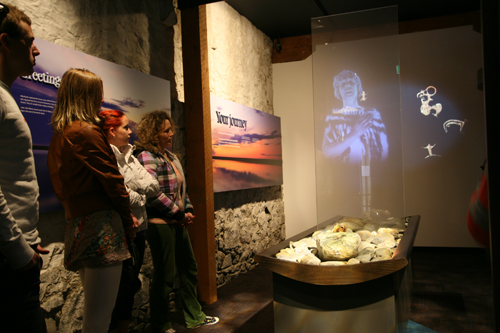Years ago as a relatively new interpreter, I worked at an outdoor education centre in Ohio that did living history programmes. The most popular programme was an Underground Railroad programme where school kids played the part of escaping slaves. As they travelled north toward Canada, they met a variety of characters, some nice and some not so nice to them. During our staff training, I was uncomfortable with the programme. We were expected to threaten the children with guns, lock them in a shed, and treat them roughly. I thought it was going too far—these were kids, after all! Living history or not, was it really necessary to rough them up for the sake of interpretation? I had a talk with the director, and though he was quite comfortable with the programme, he agreed to allow me to play characters that were not required to threaten the children with firearms.

African American slaves picking cotton in Alabama
http://etc.usf.edu/clipart/
What I didn’t count on was our audience. These little children arrived with no understanding of the history of slavery in America, and often with a wall of inherited prejudices against African Americans. Within a month, I was one of the most ruthless slave hunters on the programme, luring the children into my confidence, then turning on them as I pulled a pistol from my skirts.
For me, slavery was one of those “hard to tell” subjects—a subject that for me was too emotional, too inflammatory, too…well…shameful to tell in graphic detail. But for my audience it wasn’t a difficult subject at all. In fact, it wasn’t nearly difficult enough for them. I realised that my job was to turn my nation’s history of slavery into an emotional, inflammatory, and shameful subject for these children. To these kids, slavery was dates and names to be memorised—dry and unemotional. My job as an interpreter was to make it emotional for them; make it personal.
As interpreters, we need to tell the hard stories. They are often the most important ones to tell. And sometimes those stories will necessarily evoke negative emotions. We can’t shy away from that. There is power in those emotions. A power we can harness.
Next month interpreters will gather in Christchurch to spend a weekend sharing our triumphs and troubles as we search for powerful and positive ways to tell difficult stories. I encourage you to join us, whether you’re a war-scarred veteran of “hard to tell” stories, or a fresh recruit facing your first “hard to tell” story. You’ll find more information about the weekend, plus a registration form on the INNZ website.





